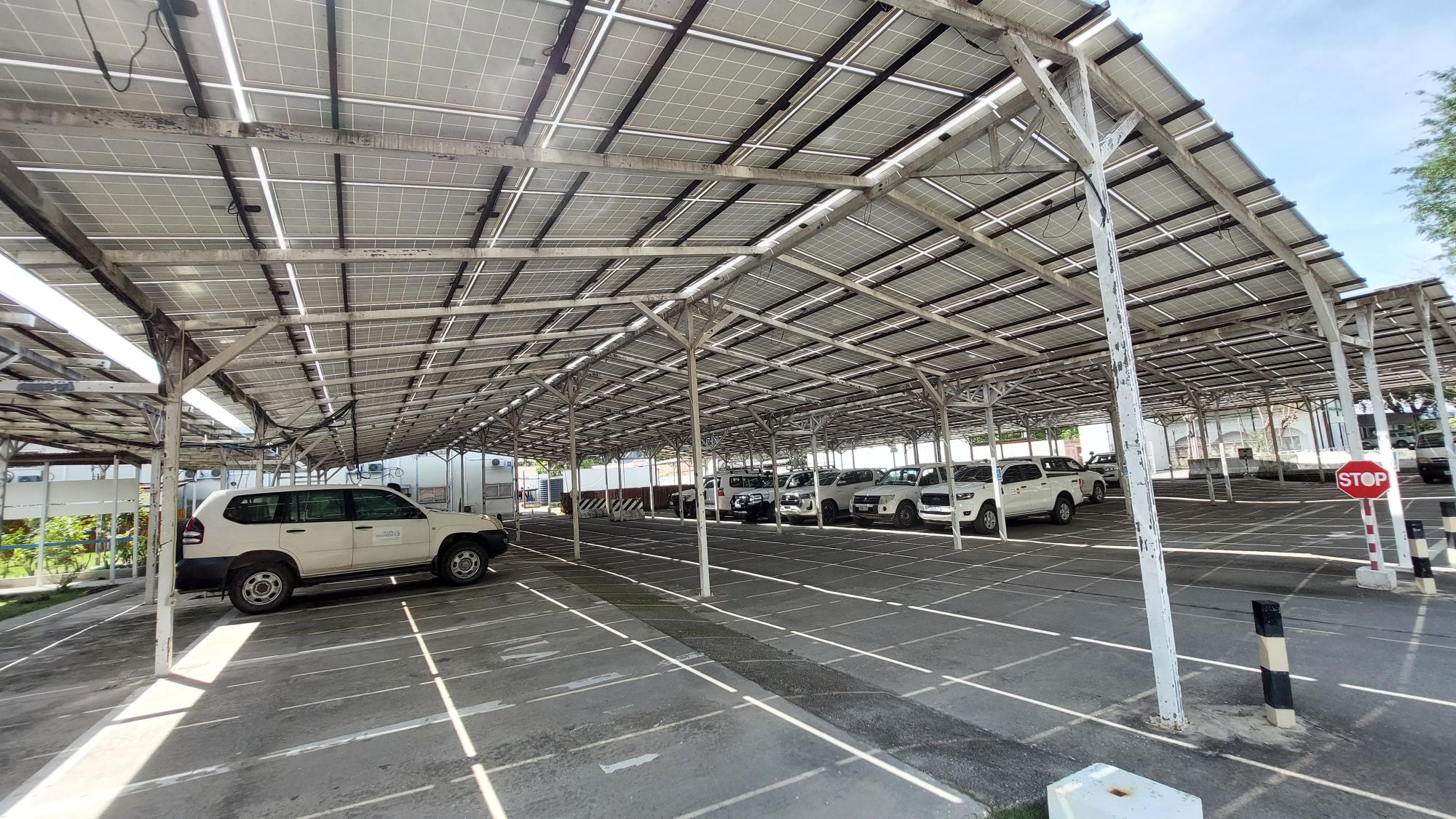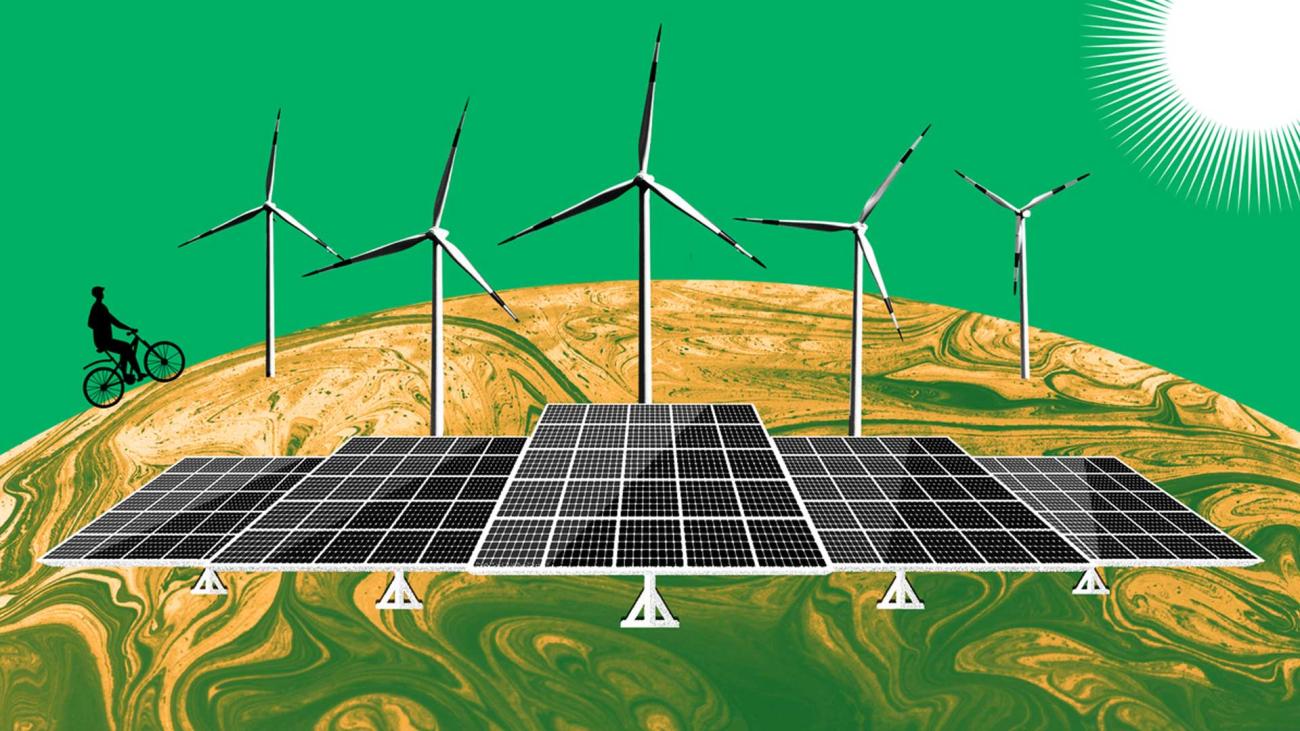The centralised nature of the local electricity supply chain has traditionally kept consumers reliant on the national grid to overcome chronic energy shortages. While more than 200,000 households have access to electricity, the distribution network is in poor condition, with excessive voltage drops and persistent service outages. The cost of electricity is also higher than in neighbouring countries, and Timor-Leste has been slow to transition from expensive diesel generation to renewables.
With the new UN reforms, the United Nations in Timor-Leste, under the leadership of the Resident Coordinator has now started lighting the way with its solar-powered grid which has begun to give maximum dividends.

It took almost a year – from feasibility to completion – to see the solar panel installed at the UN Timor-Leste compound.
Photo: RCO Timor-Leste
A powerful 300 kWp photovoltaic system is producing 400,000 kWh of clean electricity annually, filling critical gaps in energy supply. "It covers 75 per cent of the daytime electricity consumption of the entire UN House, which hosts 14 UN agencies in Dili and has reduced reliance on fossil fuels and generators, leading to 286.000 kg of CO2 emission saved every year," said Project Coordinator Ulderico Ze Machado.
This move comes with the UN's revised Business Operations Strategy (BOS) that guides strategic planning, management, monitoring, and reporting of the UN Country Team's joint support. The Operations Management Team started weighing the feasibility and working on a cost-efficient alternative energy solution in 2016-2017 when Timor-Leste was facing high electricity costs and increased CO2 emissions.
"In Timor-Leste, our road to the 2030 Agenda for Sustainable Development starts at home. Our solar energy system can be a model for other UN Country Offices to show how we can jointly, sustainably and effectively tackle greenhouse emissions while reducing operational costs and scale up support across the United Nations System. Greening our business operations can help maximise efficiency, improve productivity, and in turn support the transition of the country to a more sustainable energy future," noted UN Timor-Leste Resident Coordinator Funmi Balogun.
The project has already substantially reduced electricity costs, which were 40% of the entire Common Premises budget. "We now save USD 90,000 annually on electricity bills and diesel costs with the hope that a 100 per cent return on the investment will be materialised within six to seven years," added Ulderico Ze Machado.
In line with the UN's commitment to the 'Smart UN Facilities and the Sustainable Development Goals', this solar project shows how a UN Common premises can work in action, and how the the United Nations Sustainable Development Coordination Framework can be coherently implemented in countries.

The infographic outlines the impact of the solar panel operations in the UN Timor-Leste compound
Photo: RCO Timor-Leste
"A project like this goes beyond providing energy. It showcases a value addition to the Government, partners, and stakeholders as to how such initiatives can help create other socio-economic benefits, including employment, greener environment, cheaper energy, and sustainable lifestyles. So, the more we implement such projects, the more we empower our communities and bring impact.
The project also evidences the skillset and expertise to support the country to transition to a more sustainable energy future and supporting the deployment of renewable energy technologies," said UNDP Resident Representative Munkhtuya Altangerel, who is also chair of the UN Operations Management Team.
Based on this successful experience, the UN Operations Management Team is now working on upscaling the project and making the UN House, a 100 per cent solar-energy-run compound.
This story was written by Ahmed Saleem, Communications Officer, Resident Coordinator's Office Timor-Leste. Editorial support by UNDCO.
For more information on the UN’s work in Timor-Leste, please visit Timorleste.un.org






